Four Seasons in a Day: An Expat’s Foray Into Ecuador
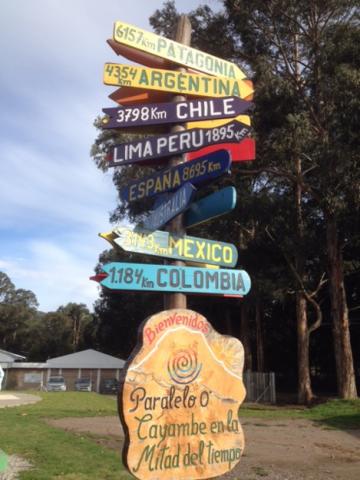
In January 2017, my wife Maxine and I relocated from San Diego, California to Cuenca, Ecuador, a city of 600,000 residents in the Southern Andes. What follows is a loose compilation of moments, reflections, observations from an expatriate’s life.
Cuenca is located at an altitude of 7,700 – 8,300 feet. Several rivers converge there, chiefly the Rio Tomebamba, which flows through the heart of the city. Mountains rise on all sides. A wide range of weather systems collide or calmly interact with each other, often in the course of a day.
Spring sunshine in the morning, when only a fool isn’t happy to be alive; summer heat in midday; and, in late afternoon, an autumn chill. Clouds assemble late in the day and when the wind kicks up, you can feel the cold in the fillings of your teeth. And, especially from March to May, it rains.
*
Early on, we take up living quarters at Apartmentos Otorongo, close by the Rio Tomebamba, along with our unassuming, happy-to-be-along-for-the-ride dog, Minnie. The Otorongo is a popular transit-point for new and returning expats, as well as other world citizens just passing through. In the lush garden courtyard, gringos and others drink wine and trade life stories, producing an instant camaraderie among strangers too restless to stay home. At night, we listen to the roar and purr of the river just outside our bedroom window.
*
Getting across Cuenca’s busy streets feels sometimes like the Wild West, except here it’s a flood of vehicles hurtling towards defenseless pedestrians, not evenly matched gunfighters in the OK Corral. Traffic on the redondel, or roundabout, spews forth an endless stream of cars, taxis, buses and motorcycles at high speed. Stoplights and stop signs offer suggestions, not mandates.
Don’t count on drivers stopping to let you across. If they do, it may be accompanied by an angry chorus of car horns. Motorists who, if you met them in church or at a holiday party, would be smiling and friendly, become—once behind the wheel—indifferent to, or murderous towards, human life.
Still, you have to get across. Take a deep breath. Look both ways. Calculate the odds of oncoming velocity and mass in relation to flesh and bones. Then race across the avenida, hoping for the best.
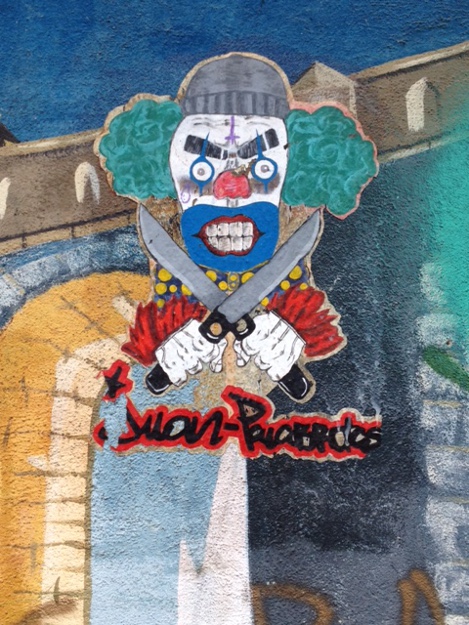
*
Motor vehicles aside, Cuencanos seem friendly and slow-to-anger by nature. Strangers smile and say, “Buenas,” in passing. They offer their seat on the bus. One day, we get lost somewhere in Tres Puentes, on the way to a friend’s apartment. City streets often lack signage, so use of a map only takes you so far. We ask a woman passing by for assistance. Within minutes, another woman and the owner of the tienda we’re standing in front of also gather to help. Soon—with the aid of our little crowd—we’re on our way.
*
Start with the assumption that the cost of just about anything in Cuenca—food, rent, clothing, medicine, entertainment—is a third of what you’d equivalently pay in the U.S. Living in or near El Centro, the city’s historic district, means everything’s in walking distance. No need to own a car or pay for car repairs or insurance.
Neighborhoods are active late into the evening. In Parque de la Madre, people run or walk on a circular path, romp with their kids on a jungle gym, sit and chat on handcarved benches. Every night around 8 p.m., dance music starts booming from speakers and a fit-looking Cuencana with a headset on puts a rag-tag group of citizens (young and old) through vigorous Zumba routines. Before and after Zumba, the atmosphere in the parque is muy tranquilo, sprinkled with sounds of laughter and children at play.
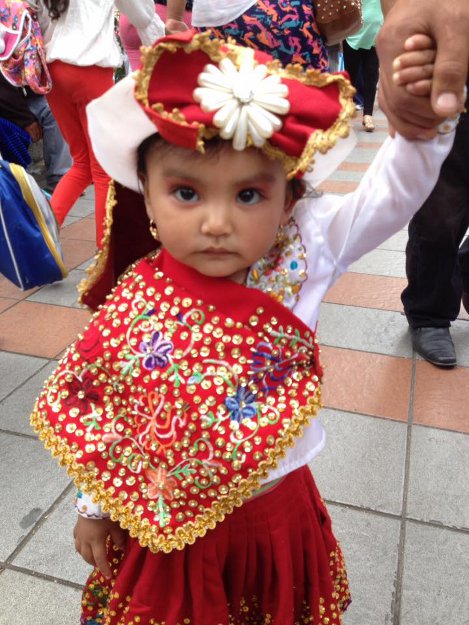
*
In Ecuador, tomato sauce is sweet. Milk is stored in unrefrigerated cartons. Mayonnaise gets slathered on papas fritas. Hungry for something different? Try cuy (roasted or deep-fried Guinea pig).
Cuencanos greet each other, even as strangers, with a light embrace and kiss on the cheek. They’re addicted to their hand-held devices, also very fond of World Cup soccer, tight-fitting clothes, and spiked heels for las mujeres.
Landscaping along the river is done by weed-whacker. Indigenous women carry infants packaged in slings across their backs. Vendors hawking candy and other treats aboard the No. 7 bus move up and down the aisle, dispensing “free” samples for which they collect payment on the way back—no pressure, just a steady, cajoling patter as the bus rolls on.
*
It takes some getting used to, the sight of so many dogs roaming free in the city. Some are wild, some abandoned, many owned by Cuencanos who let them out during the day and take them at night. The feral thin-ribbed canines see through the bustle of humanoids, always on the lookout for the next promising bag of garbage. When one of them starts to trot across a busy street, I turn away, shoulders hunched against the sound of impact. Nothing happens. The dog hurries down 3 de Noviembre or some other hectic thoroughfare, unharmed. I’ve yet to see a car strike a dog or come across a carcass in the road. How do they avoid being crushed by traffic?
The most painful encounters are with dogs that—despite the misery of their living conditions—wag their tails at your approach. You can’t feed the hundreds or thousands of them loose around the city, but any one dog, rewarded with table scraps, will follow you for miles before giving up.
*
Other creatures, too. Wild parrots gather in the trees of Parque Calderon, squawking and chirping like mad. A man herds a trio of goats down Avenida Solano. Behind an architect’s fence, a rooster and two hens hold court in the grass beside the owner’s SUV. From the window of our apartment building, we watch a half-dozen llamas, tethered to a grassy knoll in Parque Pumapongo, graze idly through the afternoon.
*
A cool, gentle evening at an outdoor café. The Museo Crespo Toral rises high above the street, an imposing structure. As we sit drinking cappuccinos, city life goes on around us—shoppers and tourists, chatty security guards with hands folded over their holsters, indigenes selling hand-crafted jewelry, rush-hour traffic on Calle Larga. Daylight fades. Lights from the museo rooftop merge with the soft glow of streetlamps to cast a movie-set effect on the structure’s
white-and-brown brick façade. What we see in this light can’t be real, seems more like a cinematic version of a Mediterranean town at sunset.
Darkness thickens. The moment’s lost forever.
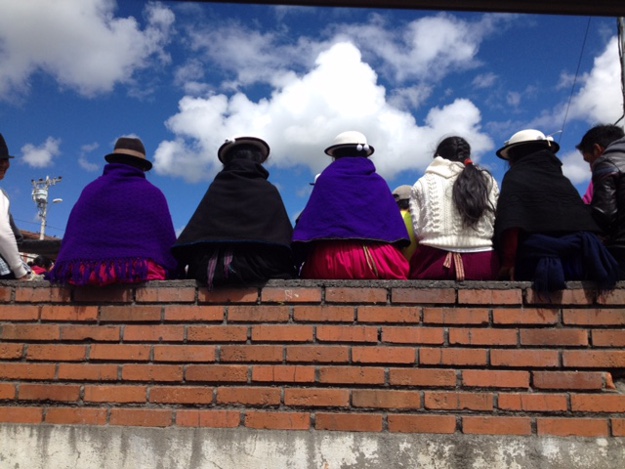
*
March. Rain blankets Cuenca for weeks. The sky’s perpetually dark, the lightweight coats we brought are miserably inadequate against the elements. Torrents of rain swell the Tomebamba, the large boulders usually protruding from the water all submerged now. The river, the color of café con leche, rumbles down to Rio Yanuncay and God knows where else.
In the dry season, the Rio Tomebamba creates its own biosphere. Children play at the river’s edge. Indigenous people wash their clothes in the water. Cabdrivers park nearby, walk up to a tree by the river and empty their bladders before moving on. Along the river walk, teenagers in school uniforms seek out a ledge or patch of grass where they give fully-clothed rein to their youthful expressions of love.
*
Our second residence in Cuenca is a fourth-floor apartment in Edificio La Isla, a building (no elevator) upriver from Apartmentos Otorongo. There are major streets on two sides, with car horns and barking dogs, round-the-clock beeping car alarms no one pays attention to at all. Firecrackers explode at random times of the day, in celebration of a holiday or just because someone likes setting them off.
Across Unidad Nacional is the Coliseo, a giant domed stadium that hosts sporting events, rock shows, religious revivals; the thundering cheers from inside can be heard several blocks away. A motorcycle repair shop is located close by, with eccentric operating hours, cerrado until late in the day, but abierto well after midnight. Newly repaired motorcycle engines rev up again and again in our dreams.
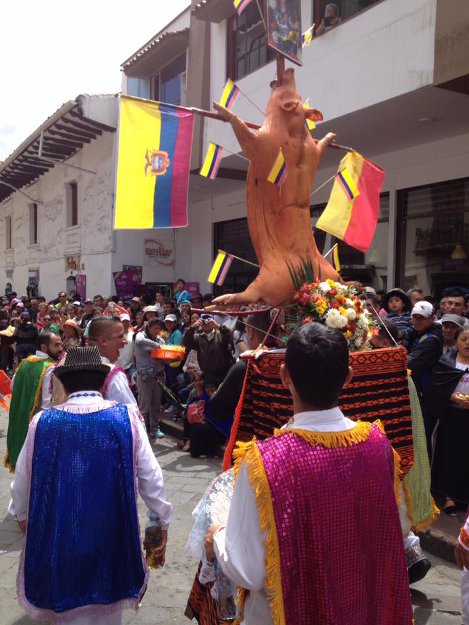
*
For several days now, someone’s abandoned Shar Pei can be seen pacing up and down a footpath by the river. The dog’s in a bad way—one eye swollen, blood caked around each ear, a nasty-looking wound on his flank—his condition worsening as he obsessively reworks the same path in search of his owner.
Coinciding with a bad period in my expat life, these sightings do nothing to elevate my mood. I can foresee the Shar Pei’s steady decline and starvation, while gringos and Cuencanos go about their lives without interest, glued to the screens of their hand-held devices. I contact Fundacion ARCA, describing the situation in poor, Google-translated Spanish on their Contáctenos page. No one responds. Nothing happens.
One day I cross the street and, within the dog’s view, leave a half-eaten hamburger on the footpath by the river. He won’t come near me while I stand there. Even the smell of microwaved leftovers can’t persuade him to drop his defenses, and the low growl in his wrinkled throat keeps me at bay. Suddenly another, more assertive perro sweeps in and snatches the meat away. The Shar Pei barks once, a feeble, depleted protest—death can’t be far off.
Two nights later, out walking my own far-more-fortunate mascota, I see a man and woman with two dogs on Pasaje Imbabura. One dog’s a mixed breed of no distinction, but the other is the Shar Pei—no longer limping, happily sniffing out trash cans and tree stumps, the wound on his flank tinctured with iodine. There, right in front of me and against all odds, a watertight happy ending. It fuels the start of the end of my own dark time.
*
Free of city limits, Ecuadorian topography becomes wonderfully varied. Rolling hills and farmland, mountain passes with hairpin curves (most alarming when the bus drives through impenetrable fog), numberless acres of untamed forest.
Other in-country travel highlights:
A park in Guayaquil where huge iguanas in plentiful numbers roam free.
A charming hostal in Olón, just a few yards from the beach.
The dusty, honky-tonk streets of Montañita, where young people drink, make lots of noise and stay up late at night.
A week vacationing on Isabella Island in the Galapagos, then seven days aboard the steamer Beluga traveling to other islands. We hike across alien lava terrain, snorkel with hammerhead sharks, ride bicycles uphill in stunning heat to a destination that doesn’t exist.
A lodge in Yasuni Biosphere Reserve, deep in the Ecuadorian Amazon basin. Rainforests and lagoons, caimans with glowing eyes lingering just above the surface of the water. Night skies devoid of ambient light, where manmade satellites leisurely cruise past the Southern Cross.
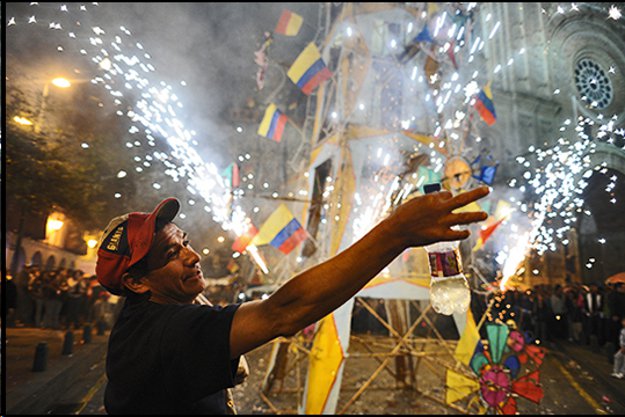
*
Christmas in Cuenca, biggest of many big holidays here. The parade in El Centro lasts over six hours, a line of schoolchildren singing hymns, groups of dancing mujeres, a float displaying a roasted, “crucified” pig. A 30-foot-high electric Christmas tree dazzles passersby in Plaza Otorongo.
On New Year’s Eve, we watch festivities from a friend’s rooftop overlooking the Yanuncay. Firework displays blossom over the mountains. Paper lanterns float ghost-like into the sky. People eat 12 grapes for good luck in the new year and set fire to monigotes (sawdust-stuffed effigies of, mostly, unpopular figures, from Donald Trump to Darth Vader and ex-President of Ecuador Rafael Correa). Small bonfires smolder in the streets for miles around.
*
One night we join our expat friends at a bar off Benigno Malo. A well-liked gringo band plays reliable hits for the Baby Boomer crowd, “Rollin’ on the River” and “Statesboro Blues.” Lots of free-flowing wine and boisterous companionship.
Afterwards, Maxine and I walk down a dimly-lit cobblestone street, headed for the Tomebamba. A quiet, cool night, the air clean with just a residual smell of traffic fumes. We come to Puente Roto (Broken Bridge) and look out over the city. Lights flicker on throughout Cuenca like stars marooned on earth. There’s a ripe scent of jasmine in the air and the faint refrains of flutes and chimes, traditional Ecuadorian music. The river pushes on, becalmed during the dry season, the greens and reds and blues of city lights shining off the water. Of moments like these, the expat experience is born.
Author Bio:
Lee Polevoi, chief book critic for HighbrowMagazine, recently completed a novel, The Confessions of Gabriel Ash.
Photographer: Maxine Fischer; Main cover and last photo: EMS Photo Adventures
For Highbrow Magazine






























































































































































































































































































































